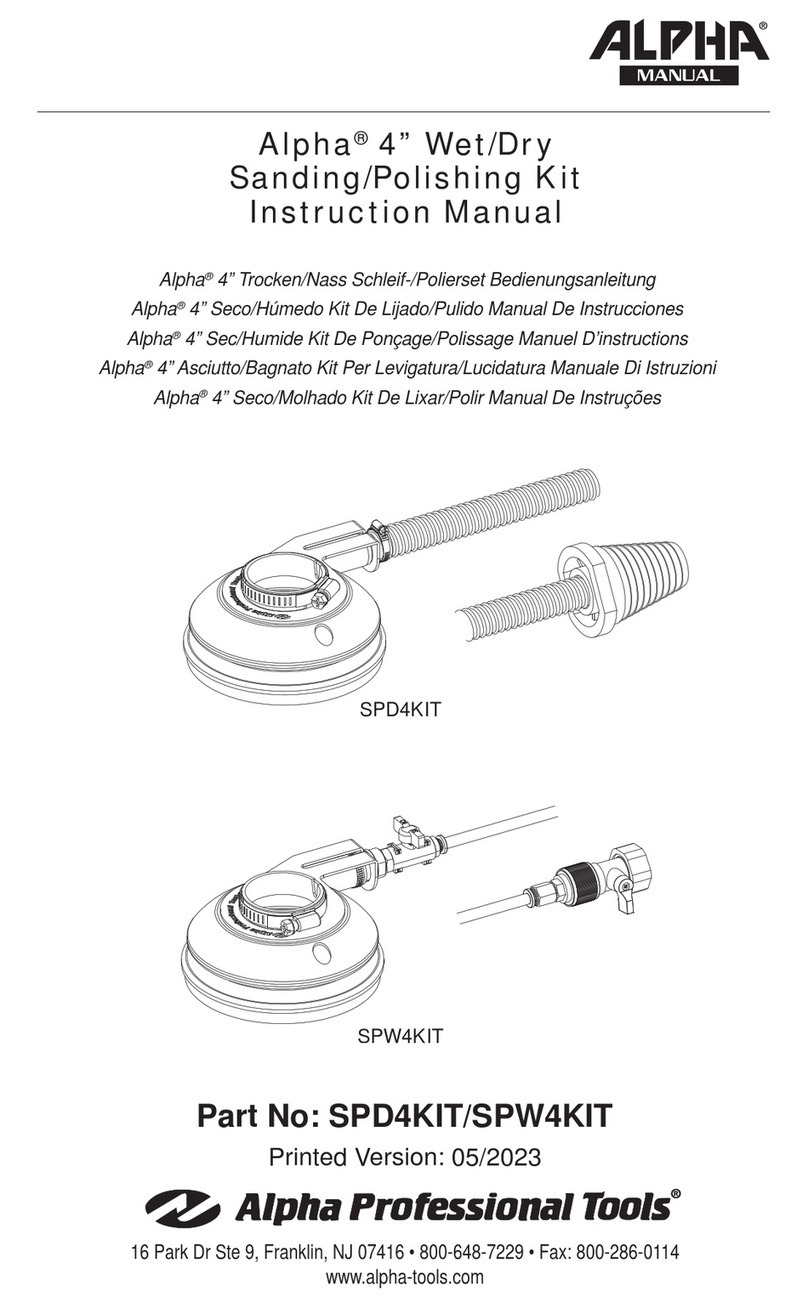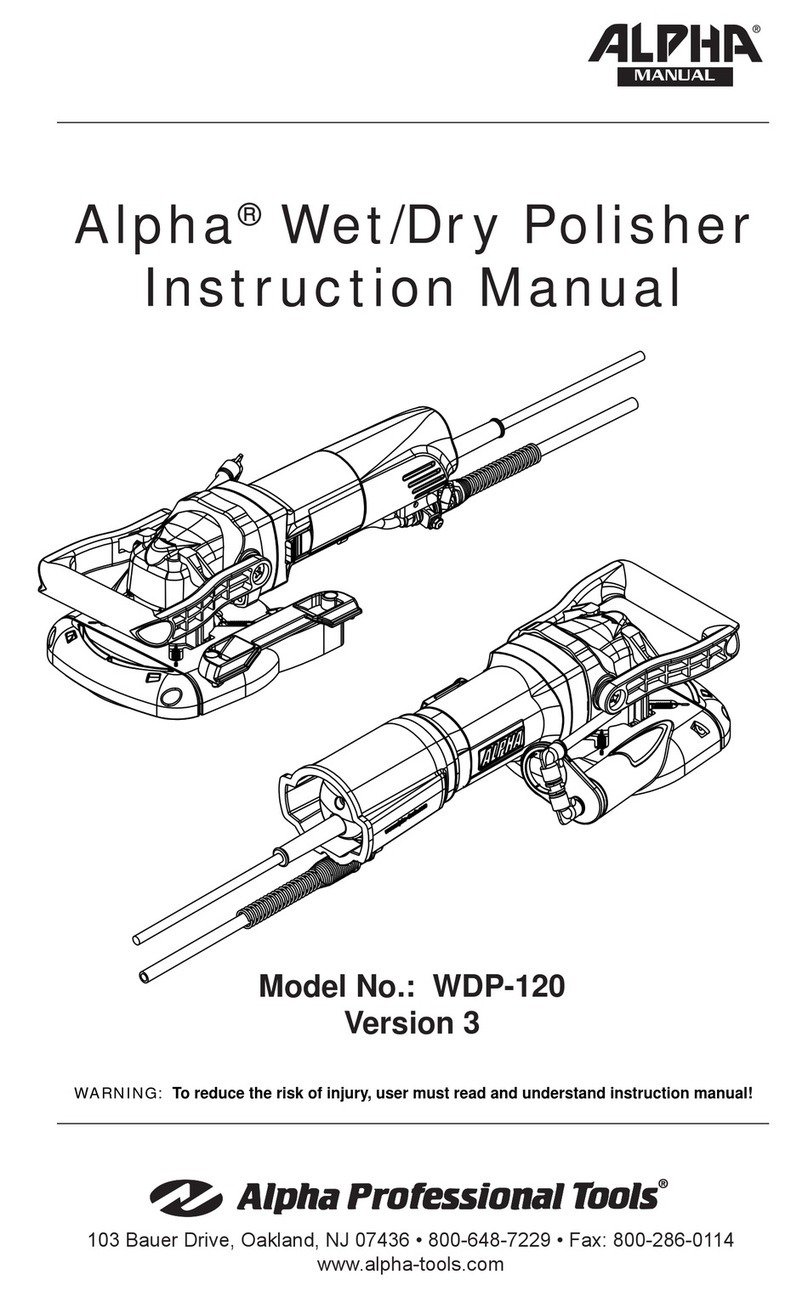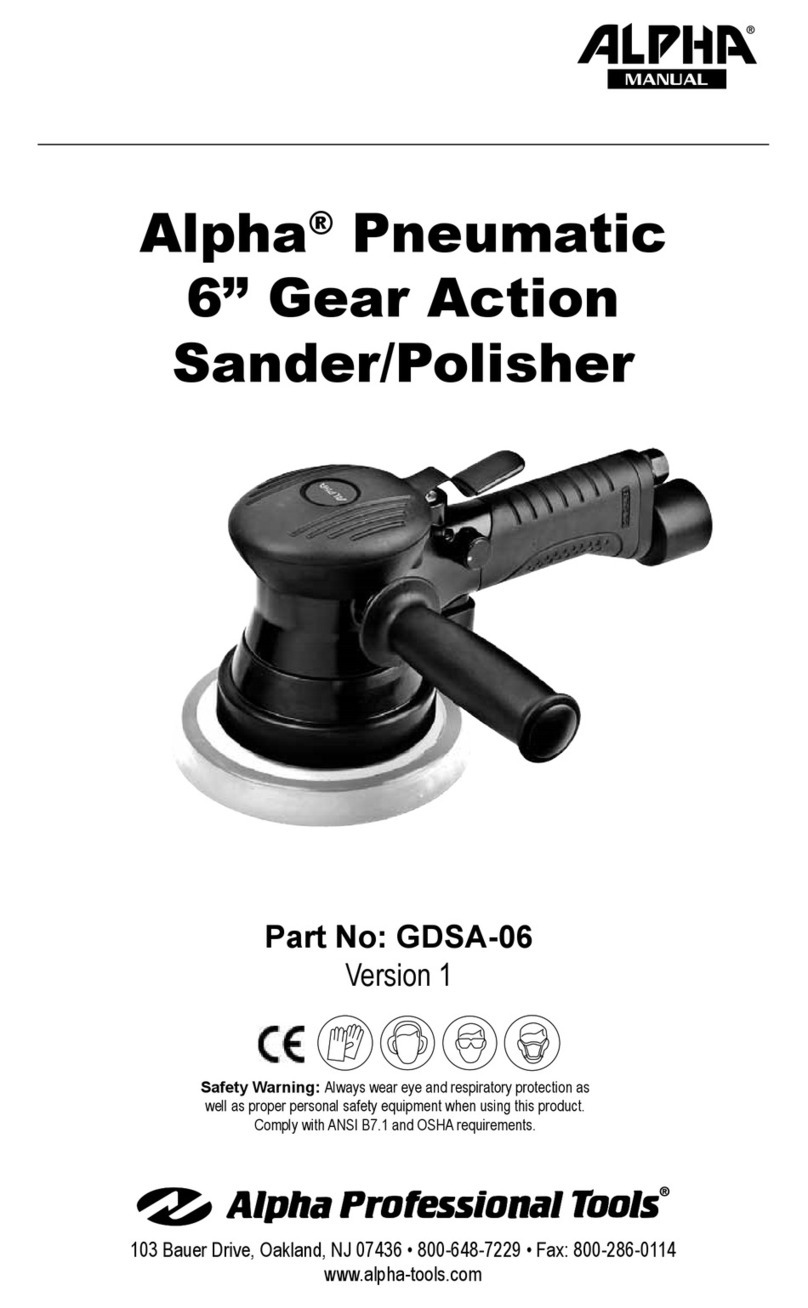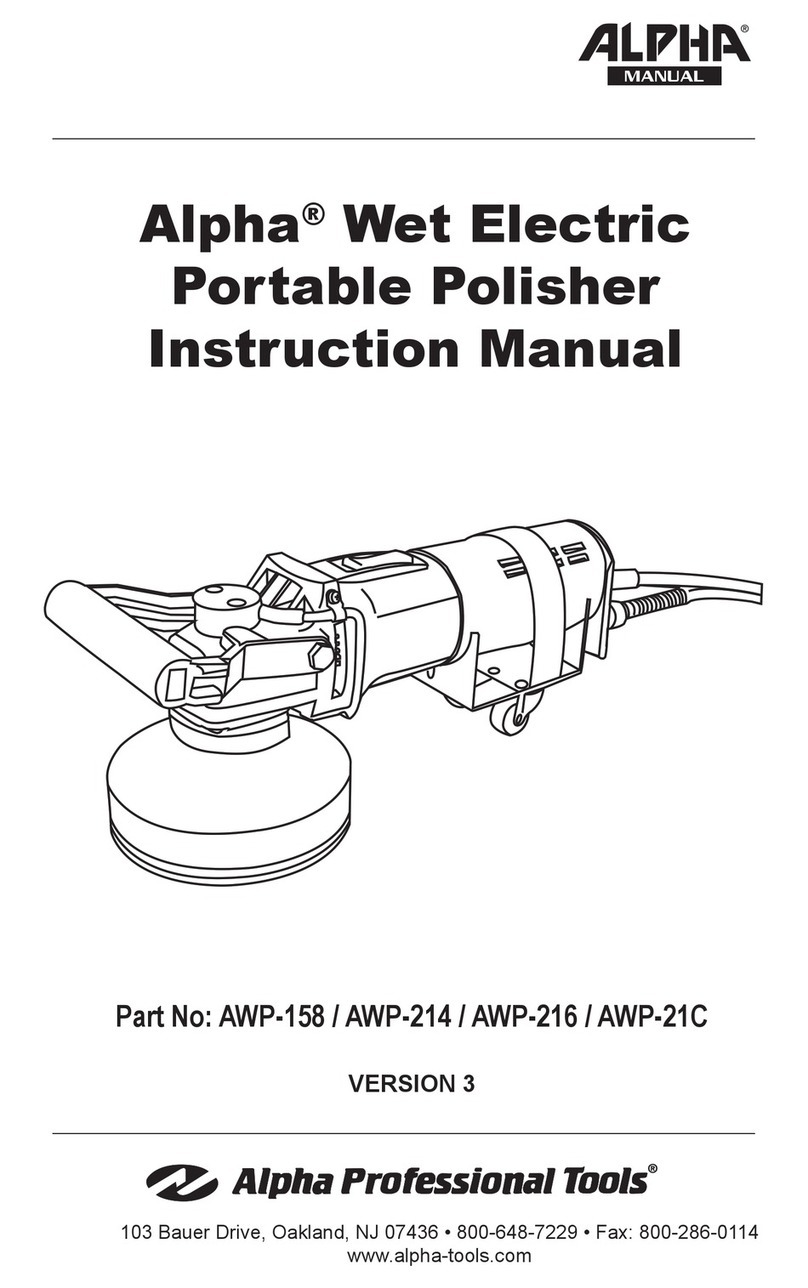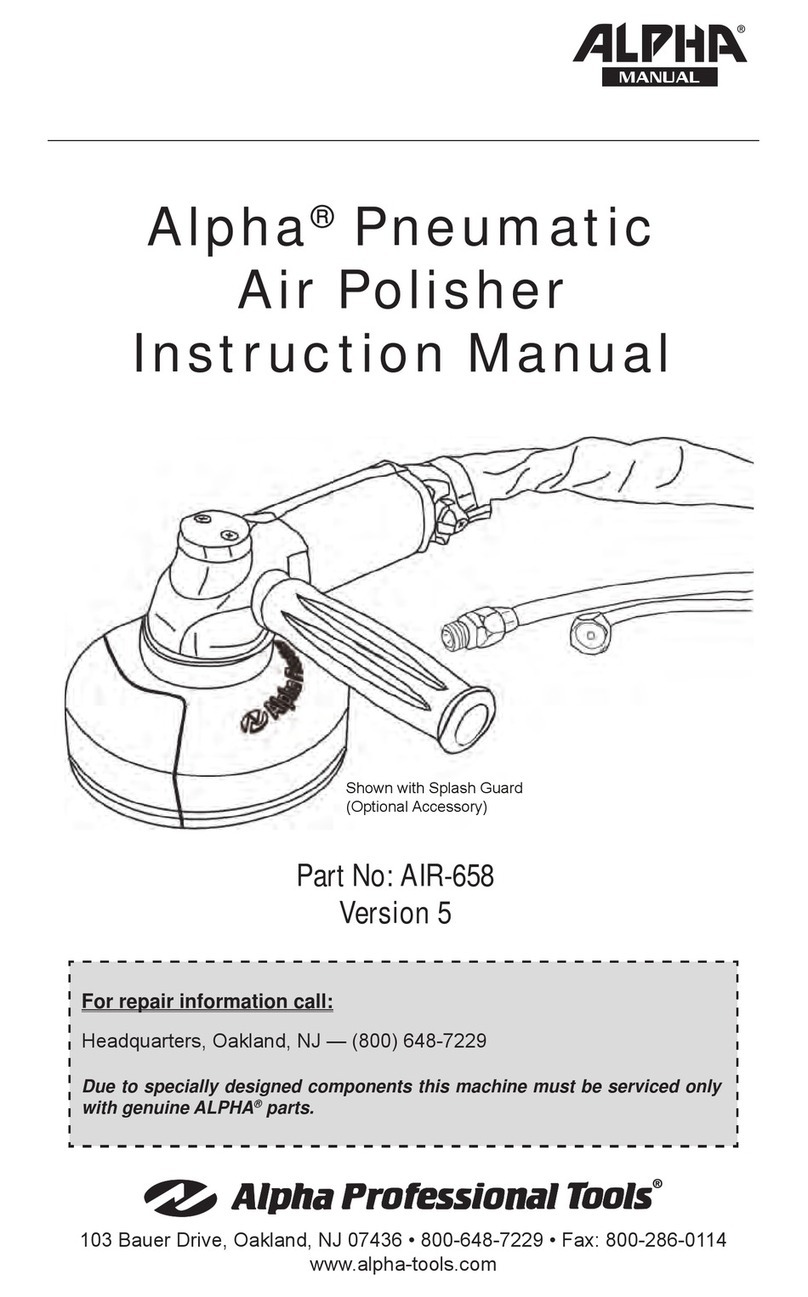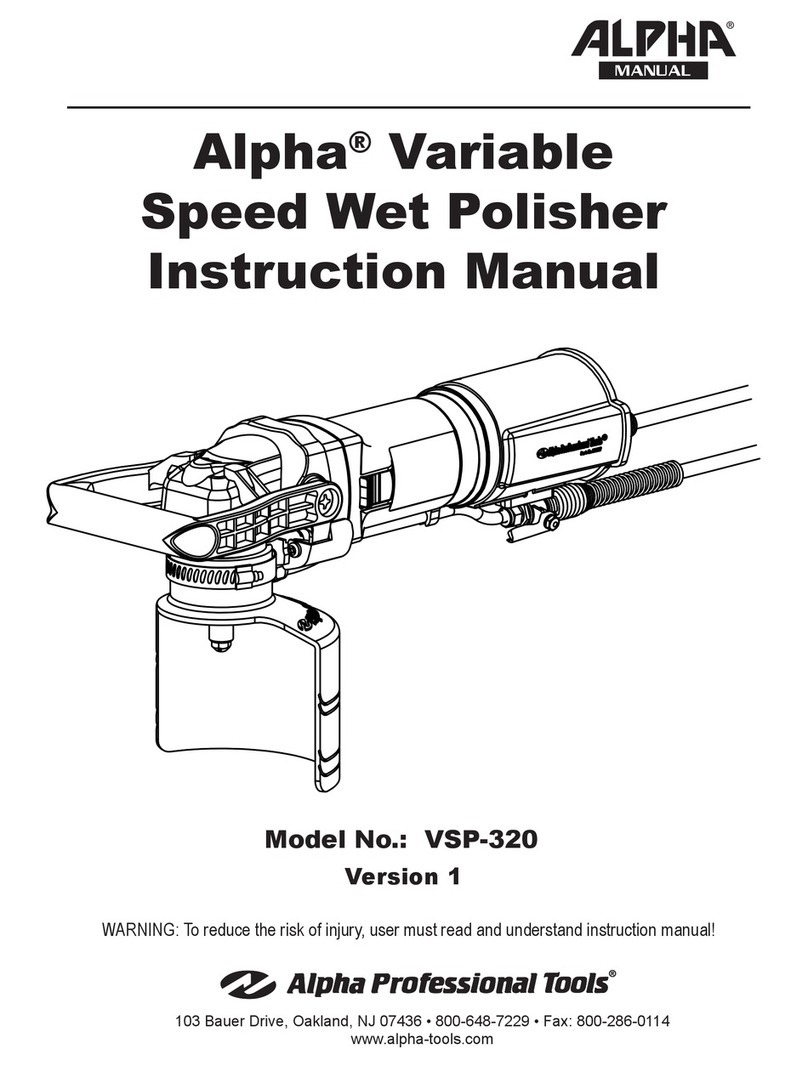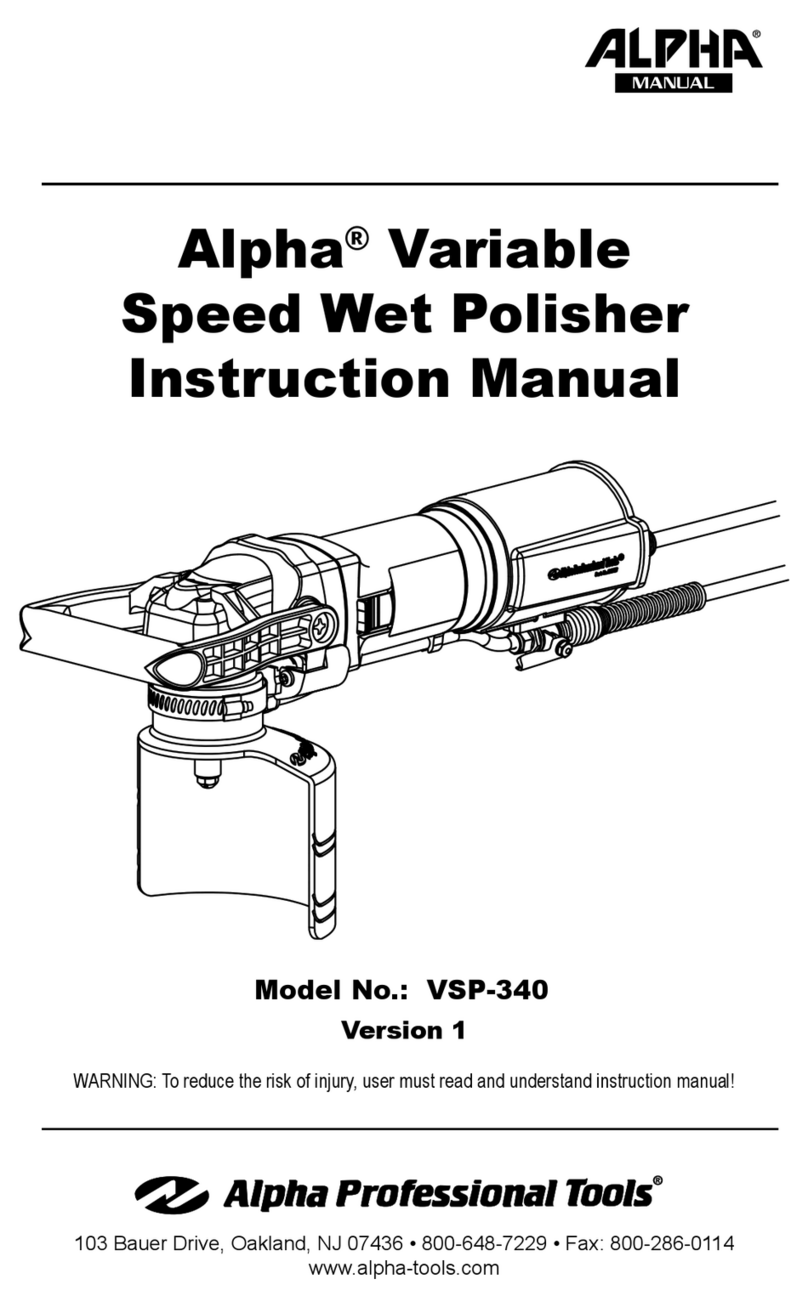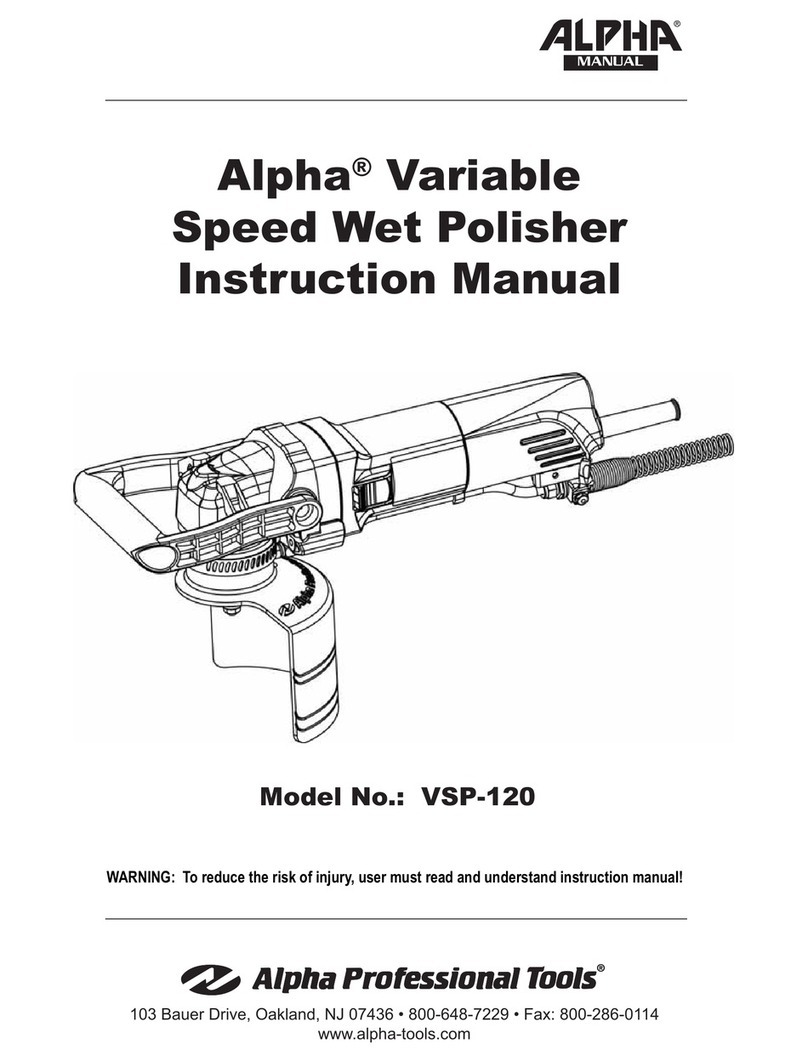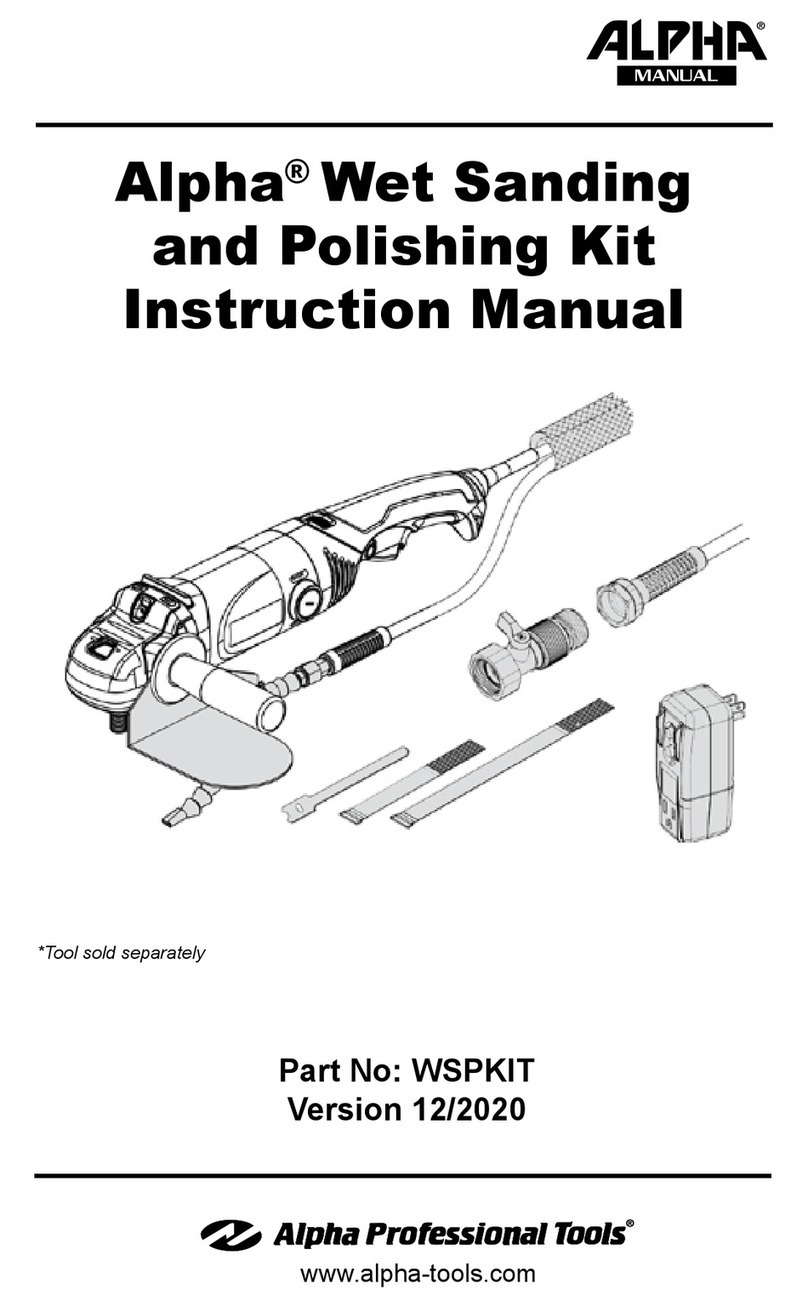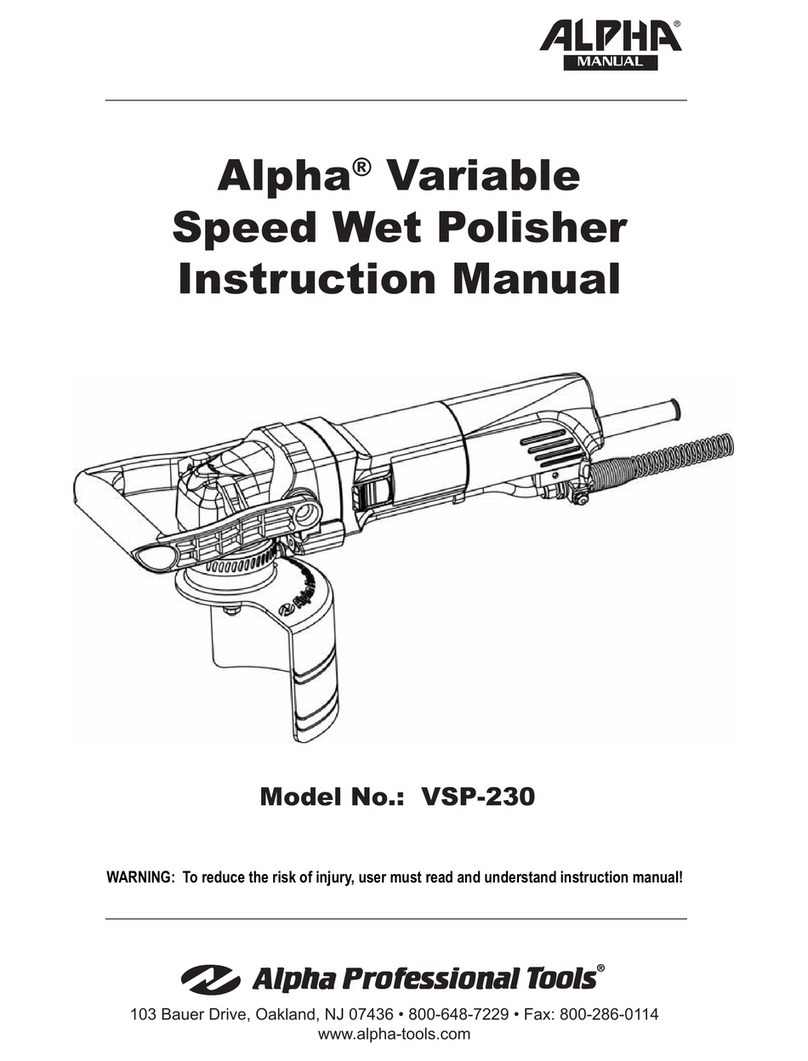5
• Do not abuse the cord. Never use the cord to carry the tools or pull the plug
from an outlet/receptacle. Keep cord away from heat, oil, sharp edges, or
moving parts. Replace damaged cords immediately. Damaged cords increase
the risk of electric shock or fire.
• When operating a power tool outside, use an outdoor extension cord
marked “W-A” or “W”. These cords are rated for outdoor use and reduce
the risk of electric shock.
TOOL USE AND CARE
• Use clamps or other practical ways to secure and support the workpiece
to a stable platform. Holding the work by hand or against your body is unstable
and may lead to loss of control.
• Inspect for and remove all foreign objects from workpiece before
polishing. Following this rule will reduce the risk of serious personal injury.
• Avoid accidental starting. Be sure switch is off before plugging in. Carrying
tools with your finger on the switch or plugging in tools that have the switch
on, invites accidents.
• Keep hands away from polishing area. Following this rule will reduce the
risk of cuts, scrapes, or serious personal injury.
• Hold tool by insulated gripping surfaces when performing an operation
where the tool may contact hidden wiring or its own cord. Contact with a
“live” wire will make exposed metal parts of the tool “live” and shock the operator.
• Do not force tool, use the correct tool for your application. The correct
tool will do the job better and safer at the rate for which it is designed.
• Do not use tool if switch does not turn it on or off. Any tool that cannot be
controlled with the switch is dangerous and must be repaired.
• Disconnect the plug from power source before making any adjustments,
changing accessories, or storing the tool. Such preventive safety measures
reduce the risk of starting the tool accidentally.
• Check for damaged parts. Before further use of the tool, check the guard
or other part to determine if it is damaged or that it will operate properly and
perform its intended function. Check for alignment of moving parts, breakage
of parts, mounting, and any other conditions that may affect its operation. A
guard or other part that is damaged should be properly repaired or replaced
by an authorized service center unless otherwise indicated elsewhere in this
instruction manual. Have defective switches replaced by authorized service
center.
• Store idle tools out of the reach of children and other untrained persons.
Tools are dangerous in the hands of untrained users.
• Know your power tool. Read operator`s manual carefully. Learn its
applications and limitations, as well as the specific potential hazards related
to this tool. Following this rule will reduce the risk of electric shock, fire, or
serious injury. Refer to them frequently and use them to instruct others who
may use this tool. If you loan someone this tool, loan them these instructions.
